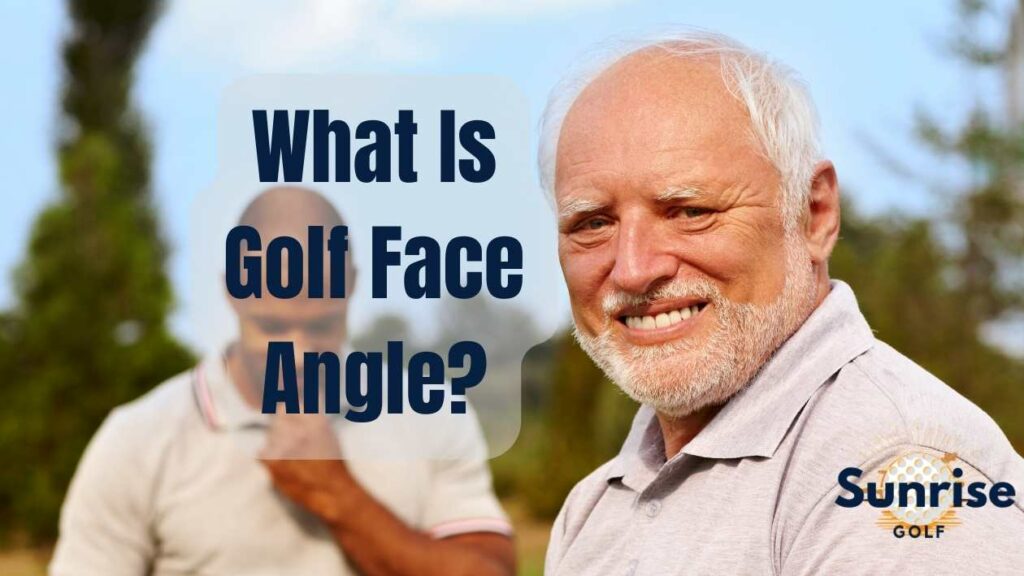Are you ready to take your golf game to the next level? Imagine having the power to control the direction of your shots with precision and accuracy, effortlessly navigating the course like a seasoned pro.
The key lies in understanding and mastering the golf face angle.
In this article, we will delve into the definition of the golf face angle, its importance, factors affecting it, techniques to improve it, and common mistakes to avoid.
Get ready to unleash your true potential on the green.
Definition of Golf Face Angle
To understand the golf face angle, imagine yourself standing at address with the clubface pointing directly at the target. The golf face angle refers to the position of the clubface relative to the target line at impact. It’s an essential factor in determining the direction the ball will travel.
The face angle can be classified as open, square, or closed. An open face angle means that the clubface is pointing to the right of the target line at impact. This leads to a shot that curves to the right for right-handed golfers. Conversely, a closed face angle indicates that the clubface is pointing to the left of the target line, resulting in a shot that curves to the left.
On the other hand, a square face angle means that the clubface is aligned directly with the target line at impact. This is considered the ideal face angle as it promotes a straight shot towards the target.
Understanding and controlling the golf face angle is crucial for achieving accuracy and consistency in your shots. By manipulating the face angle, you can adjust the direction and curvature of your shots to navigate hazards or achieve a desired ball flight.
Importance of Golf Face Angle
Understanding and controlling the golf face angle is crucial for achieving accuracy and consistency in your shots. The face angle refers to the direction the clubface is pointing at the moment of impact with the ball. It plays a significant role in determining the initial direction of the ball and can greatly affect your shot outcome.
Imagine a scenario where your swing path is perfect, but the face angle is slightly open or closed. This small deviation can result in the ball flying off-course, missing your target completely. To illustrate the importance of the golf face angle, consider the following table:
| Face Angle | Result |
|---|---|
| Square | Straight Shot |
| Open | Slice (ball curves to the right for right-handed golfers) |
| Closed | Hook (ball curves to the left for right-handed golfers) |
As you can see, even a slight variation in the face angle can have a significant impact on the ball’s flight path. It is essential to understand and control the face angle to consistently hit your intended target.
Factors Affecting Golf Face Angle
Factors that influence the golf face angle include grip, club selection, and swing mechanics. Let’s delve into these factors and understand how they affect your golf game:
- Grip:
- The way you hold the club has a direct impact on the face angle. A strong grip tends to close the clubface, while a weak grip tends to open it. Experiment with different grip styles to find the one that suits you best.
- Pressure plays a role too. Gripping the club too tightly can result in a closed face at impact, while a loose grip can lead to an open face. Find the right balance of grip pressure to maintain control over the face angle.
- Club Selection:
- The type of club you choose also affects the face angle. Different clubs have varying degrees of loft, which can influence how the ball reacts. A higher lofted club tends to open the face, while a lower lofted club tends to close it.
- Swing Mechanics:
- Your swing mechanics greatly impact the face angle. Factors such as swing path, clubface rotation, and body alignment all contribute to the position of the clubface at impact. Working on a consistent and repeatable swing will help you maintain a consistent face angle.
Techniques to Improve Golf Face Angle
To enhance your golf face angle, implement specific techniques that focus on grip, club selection, and swing mechanics.
The grip is crucial in controlling the face angle at impact. Ensure that your grip is neither too tight nor too loose. A neutral grip, with the V’s formed by your thumb and index finger pointing towards your right shoulder, promotes a square face at impact.
Additionally, club selection plays a vital role in achieving the desired face angle. Consider using a club with a higher loft to reduce the chance of an open face. Experiment with various clubs to find the one that suits your swing and helps you consistently achieve the correct face angle.
Finally, pay attention to your swing mechanics. Maintain a smooth and balanced swing, with a focus on keeping the clubface square throughout the swing. Practice proper body rotation and weight transfer to ensure a solid impact and consistent face angle.
Common Mistakes to Avoid With Golf Face Angle
Avoid messing up your golf face angle by staying aware of common mistakes. To ensure your success on the golf course, it’s crucial to understand and avoid the following errors:
- Grip: A faulty grip can cause your clubface to be misaligned at impact. Make sure your grip is firm but not too tight, with your hands positioned appropriately on the club.
- Alignment: Poor alignment can lead to an incorrect face angle. Always aim your clubface at the target and align your body accordingly. Pay attention to your feet, hips, and shoulders to ensure they’re parallel to the target line.
- Swing Path: A faulty swing path can result in an incorrect face angle at impact. Focus on swinging the club on the correct plane to maintain the desired face angle throughout the swing.
- Overactive Hands: Excessive hand action during the swing can cause the face angle to be inconsistent. Practice maintaining a smooth and controlled swing, letting the club do the work.
Conclusion
In conclusion, the golf face angle plays a crucial role in determining the direction and trajectory of your shots.
It’s essential to understand the factors that affect the face angle and to practice techniques that improve its consistency.
Remember the old adage, ‘Practice makes perfect,’ as consistent practice and attention to detail will help you avoid common mistakes and improve your overall performance on the golf course.

